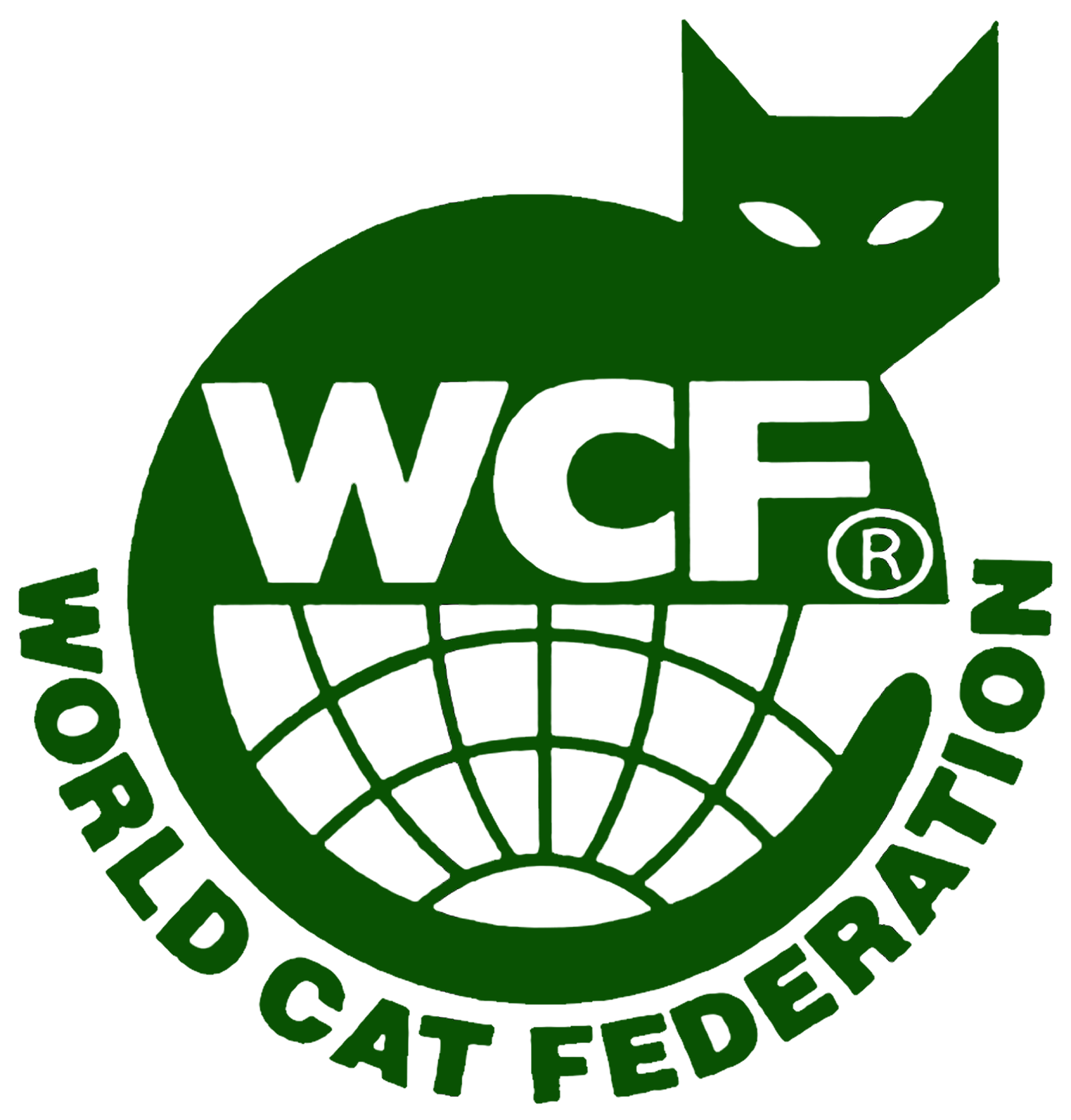WCF BREEDING AND REGISTRATION RULES FOR ALL MEMBER CLUBS
General
The general welfare and health of all cats should be the most important consideration for all WCF members, breeders and owners of cats.
These rules are general guidelines and should be adapted and followed as far as local circumstances and culture allow.
Breeding
Cats with a congenital anomaly may not be bred and may not be sold for breeding.
Cats with different mutations must not be bred together to produce kittens with 2 different and more mutations in the same kitten.
Each WCF member club decides, with the guidance of it’s judges, on the local outcrossing allowances and inbreeding programs, within the rules of the WCF and according to the local government laws.
Full brother-sister matings are not advisable and should be strongly discouraged.
Each WCF member club may accept any breed recognized by a WCC member for registration and shows.
They may receive all WCF titles. The WCF member clubs have the autonomy to refuse any breeds not recognized by WCF as they wish.
Catteries
The breeder must be a member of a WCF-Club. The cattery must have a registered WCF cattery name.
All information such as the name of breeder, address, breeds, etc. have to be current and updated as soon as there are changes.
The registering breeder/cattery must be the legal owner of the dam and be able to prove ownership.
The breeder/cattery has to follow the WCF – and member club’s breeding rules and the local government laws concerning the protection of animals, including the commercial registration of the cattery and breeding stock, where required.
Husbandry
These guidelines include the adequate feeding, hosting and general care of cats.
At least the minimum standards according to the animal protection law of the breeder’s resident country have to be me.
The cattery and cat runs have to be of adequate size and offer protection against heat, cold and drafts.
They should allow enough natural daylight and be maintained in a good state of repair and – standard of hygiene.
If possible, the cats should have access to a secure garden environment.
Regular human contact and socialisation must be provided, as well as the encouragement of natural behaviour, like scratching,
hiding and playing.
Registers (Stud Books)
It is recommended that clubs keep a Full Register as well as a Supplementary or Experimental Register.
The Full Register may also be referred to as the LO (Livre d’Origine) Register and the Experimental Register as the RIEX (Registre Initial et Experimental). Cats registration numbers should have an identification code indicating on which of the two registers they are registered.
Cats on the Full Register should be of a breed, pattern and colour officially listed in the WCF Standard of points and must have at least 3 generations of the same or related breeds:
The kitten itself as generation 0, the parents as 1st generation, the grandparents as 2nd generation and the great-grandparents as 3rd generation.
The Supplementary Register is used for all other cats (for example outcrossed, novice and unrecognised breeds.)
The standard of points and show rules provide more information on Novice Registration and outcrossing of certain breeds and these must be followed without exception.
The registers should contain at least the registered name of the cat, the registered cattery name of the breeder, the registration number of the cat, the breed, pattern and colour of the cat (as well as other relevant features, like coat length, eye colour, ear shape, tail, etc.), the date of birth of the cat, the sex of the cat, the name of the breeder and the name of the registered owner.
It is strongly recommended that the member club’s WCF identification code forms part of the registration number.
It is further recommended to use the EMS code available on the WCF website.
Transfer of Registered Cats
Cats may be transferred from any other club or organization, according to the individual club’s policy.
This should only take place with proof of the original registration documents.
The original registration number of the transferrred cat must be retained.
When a new number is assigned, the original registration number must also be retained in the pedigrees for reference purposes.
The original name of a transferred cat must always be retained, but the new owner’s cattery name may be added as a suffix.
When a cat is transferred the previous registration document has to be marked as “non-valid” or “cancelled”.
Ownership of Breeding Cats
A Breeder should provide proof of ownership before offspring of a female cat can be registered.
The breeder should also provide proof of ownership of the stud cat, or a mating certificate signed by the owner of the stud cat.
Sales-contract
The contract has to contain all the information about the breeder, new owner and complete details of the cat.
It should include a health-certificate and information about the special needs of cats and the specific breed.
The breeder should support the new owner in any way possible.
New Breeds, Patterns & Colours
All Breeds, Patterns & Colours recognized by a WCC organisation may be accepted for registration on the Supplementary Register (RIEX).
The separate set of WCF rules for full recognition of new breeds and colour varieties should be followed before such a cat can be registered on the Full Register (LO).
